|
Take a trip back to the cold war when there was the active threat and hysterical of a potential nuclear war at any moment. See firsthand how the government, through film, educated the masses to prepare for a nuclear attack and how to protect themselves from radiation and other dangers both during and after the attack.
|
|
Here are all the films that make up this historical collection:
Duck and Cover (1951)
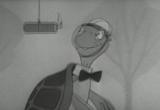  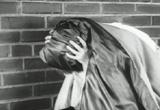
This famous Civil Defense film fhas Bert the Turtle showing children what to do in case of atomic attack.
The film starts with an animated sequence, showing an anthropomorphic turtle walking down the road. A chorus sings the Duck and Cover theme:
There was a turtle by the name of Bert
and Bert the turtle was very alert;
when danger threatened him he never got hurt
he knew just what to do...
He ducked! [inhalation sound]
And covered!
Ducked! [inhalation sound]
And covered!
While this goes on, Bert is attacked by a monkey holding a string from which hangs a lighted firecracker. Bert ducks into his shell in the nick of time, as the firecracker goes off and blows up both the monkey and the tree he is sitting in. Bert, however, is shown perfectly safe, because he has ducked and covered.
The film, which is about 10 minutes long, then switches to live footage, as a narrator explains what children should do "when you see the flash" of an atomic bomb. The movie goes on to suggest that by ducking down low in the event of a nuclear explosion, the children would be safer than they would be standing, and explains some basic survival tactics for nuclear war.
Producer: Archer Productions, Inc.
Audio/Visual: Sound, Black & White
Run time: 9:15
|
House in the Middle, The (1954)
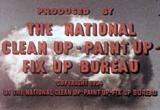 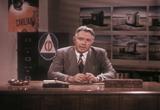 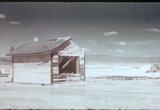
This film is a demonstration of how a clean house survives an atomic blast better. The film is set at the Nevada Proving Grounds where they build a small town of houses in various conditions and with various materials in and around them before the blast. They then go back after the blast and examine the sirvivability of each of the houses. And of course it shows that a clean house survives an atomic blast better than a dirty house.
Producer: National Paint, Varnish and Lacquer Association
Audio/Visual: Sound, Color
Run time: 12:09
|
About Fallout (1963)
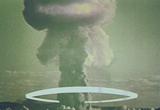 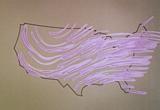 
This film examines what happens in the aftermath of a nuclear explosion. It discusses radiation dispersion patterns, the effects of fallout vs distance from the explosion, how it affects food and the human body and shelters and much more. The film describes the importance of proper radiation fallout shelters and effective decontamination measures.
Producer: U.S. Department of Defense, Office of Civil Defense
Audio/Visual: Sound, Color
Run time: 22:25
|
About Fallout (1955)
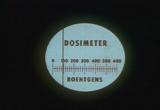 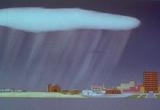 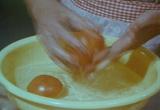
This film examines what happens in the aftermath of a nuclear explosion. It discusses radiation dispersion patterns, the effects of fallout vs distance from the explosion, how it affects food and the human body and shelters and much more. The film describes the importance of proper radiation fallout shelters and effective decontamination measures. This is the original 1955 version and is not as complete as the more modern version shown in another section of this anthology due to our growing understanding of radiation from 1955 to 1963.
Producer: Wilding Picture Productions, Inc.
Audio/Visual: Sound, Color
Run time: 8:20
|
Radiological Defense (1961)
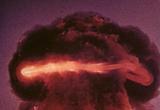 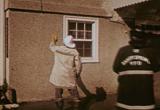 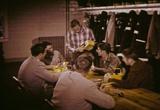
A frank discussion on nuclear fallout and the damage it can cause from an attack on the Untied States.
Producer: U.S. Office of Civil Defense
Audio/Visual: Sound, Color
Run time: 26:17
|
Survival Under Atomic Attack (1951)
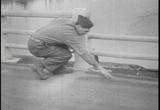  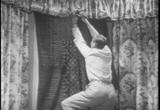
Explores methods someone can use to protect himself from the dangers of radiation from an atomic bomb if caught in the open or in the home.
Producer: U.S. Office of Civil Defense
Audio/Visual: Sound, Black & White
Run time: 8:45
|
Operation Cue (1955)
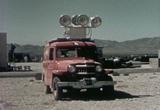 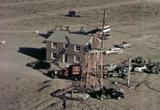 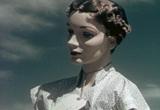
Operation Cue is narrated by reporter Joan Collin, who shares the sights she witnesses first-hand while observing the APPLE-2 test. From the planning phase through an actual visit to the site after the detonation, she shows viewers the potential results of the explosion and effective ways of sheltering people from the effects of a nuclear blast.
Electrical power experiments included setting up poles, lines, transformers, and a complete substation and observing the thermal and blast effects. Effects are studied on two radio towers and transmitters, a liquefied petroleum and natural gas facility with propane storage tanks, five types of completely furnished houses, rows of mannequins with standard clothing, and canned and packaged food. Spectacular footage shows the awesome destructive power of a nuclear explosion.
Producer: U.S. Federal Civil Defense Administration
Audio/Visual: Sound, Color
Run time: 14:36
|
Operation Cue 1964 revision (1964)
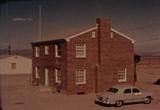  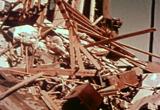
Revised and updated version that shows the our increased understanding of radiation from 1955 to 1963.
Producer: U.S. Department of Defense, Office of Civil Defense
Audio/Visual: Sound, Color
|
News Magazine of the Screen: Atomic Energy
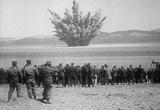  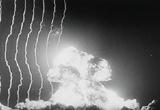
Good collection of 1950s news stories on atomic weapons , civil defense and nuclear energy.
Producer: Warner Path? News
Audio/Visual: Sound, Black & White
Run time: 21:26
|
Radioactive Fallout and Shelter (1965)
 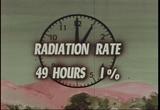 
This film shows how one can take care of medical and health needs in the event of an atomic attack. It shows how radioactive fallout works and what kinds of shelter can be taken. It also shows the damage radiation can do to people and what steps can be taken to minimize their effects during an attack.
Producer: U S Office Of Civil Defense
Audio/Visual: Sound, Color
Run time: 28:00
|
|
